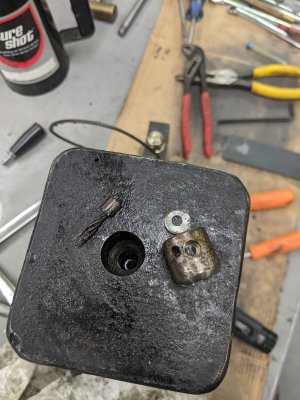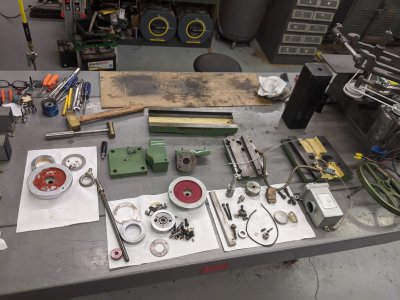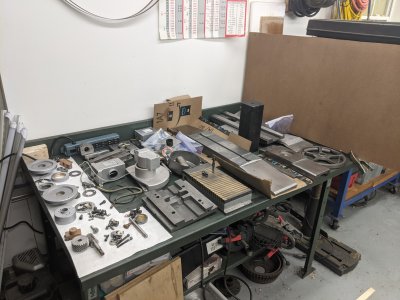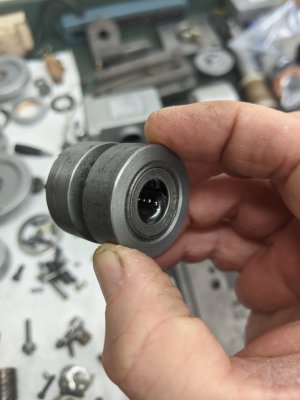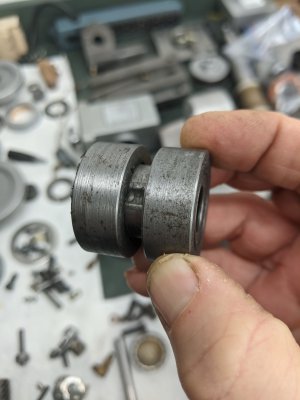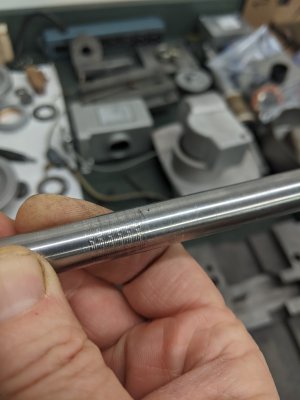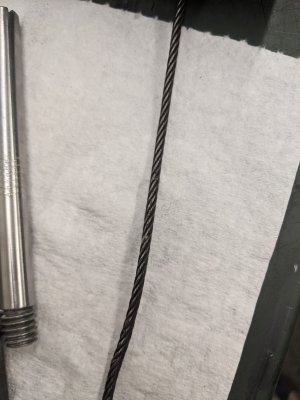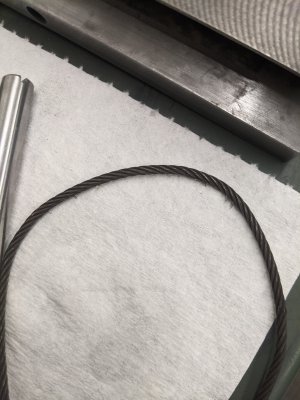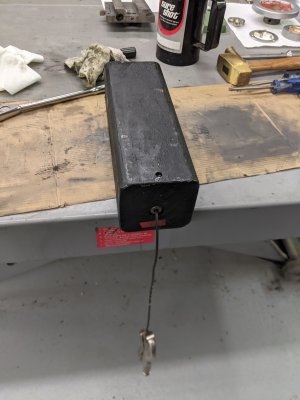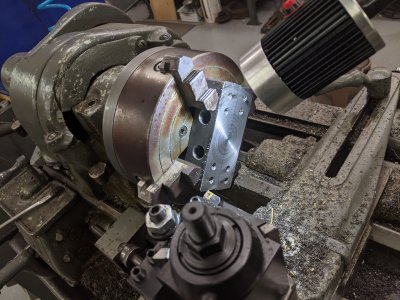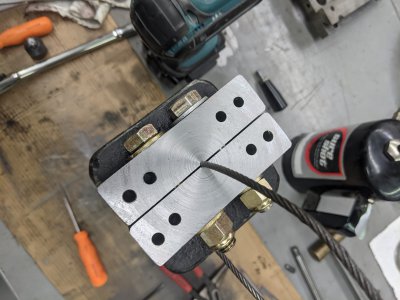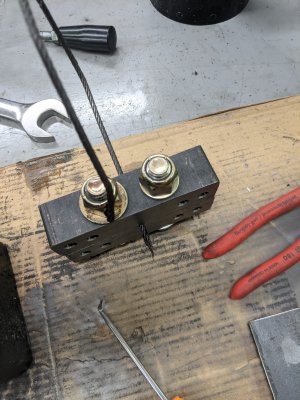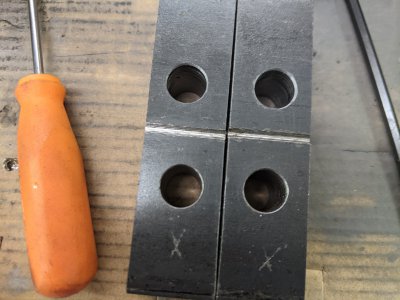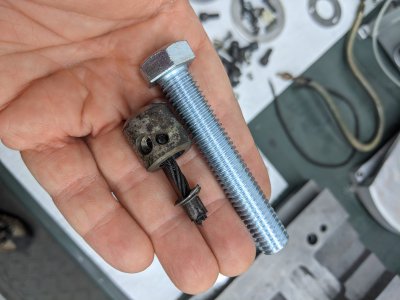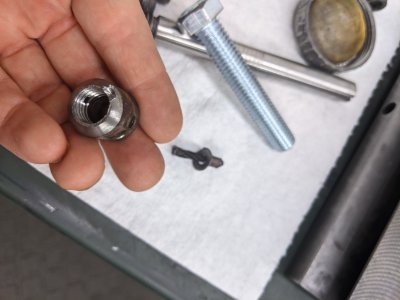There was also a recent question about unwanted z-axis movement. So I figured I would put a bit here about that. Before I took mine apart I was getting some very surprising, and occasionally exciting, unexpected z-axis movement. On the order of a few (maybe more) thousands. I attributed this to the machine being old a crusty and the ways must be dirty. I addressed this by using a small deadblow to tap on the z-axis slide, and that "fixed" it. Right. When I took the machine apart I found the real issue.
The column of the machine is not just a structure for the motor and z slide to sit on. It also houses a counter balance. This is certainly because this machine is "direct" drive and the weight on the z-axis acme nut, made of bronze, would be rediculous without it. However, the design of the counter weight system on mine (80's) is just bad. Not just poor execution, badly designed. It is also poorly executed.
The counter weight is a brick of cast iron. A cable attaches to the top of the brick. There is a fine finished, poorly heat treated, 1/2" diameter shaft that goes through the front of the column and screws into the back of the column, near the top. On the shaft sits an axial bearing with a collar pressed onto each end forming a crude bearing. The cable drapes over this and goes through a hole in the column into a bushing pressed into the z slide base, and then draped down over a small diameter hardened dowel pin, and then attaches to the bottom of the z slide...... Neat.
Seeing this made my inner engineer scream a little. The axial bearing housing has four flats on it...... /hand-to-forehead Seriously?!?!? Yes, seriously. First off, an axial bearing is a total misapplication. There are axial bearings that can take rotational load. This is not one of them. Add to that the ball bearings are less than a 1/16th in diameter and ride on a fine finished 1/2" diameter shaft. How do I know the shaft is poorly heat treated, if at all? It's all the dents and bearing trails that give it away. Add to that the minimum bend radius of a less than 3/16 cable, which is around 2", bending over a 7/8" diameter "pulley" and a maybe 3/16" diameter hardened pin. And then, finally, did I mention the pulley with FOUR FLATS ON IT!!! (Insert nerd rage here)
It's just a bad design. The ball bearings dig into the poor bearing surface, which allows the cable to drag over the hard edged flats and then over a hard pin. At least the pin is round I guess. This has caused the cable in mine to become shinny and flat in one side, and severely abraded. This allows the z-axis slide, with all that weight, to hang on traversal and jump when, well, whenever. I have a solution to this, which, while not perfect, does not involve flats on a square shouldered pulley. A better solution would involve 2"-ish diameter pulleys, but that would involve moving the axis of the pulleys out of the z slide base and out of the column.
On a related note, whoever assembled my machine, if you're listening, please stop using so much loctite. Or at least switch to blue. Blue is just as tasty as the real thing and would allow for disassembly of things without the use of magic bullets. If anyone is interested in how to get the cable detached from the counter weight with the use of carbide drills, let me know, it's quite the contraption.


